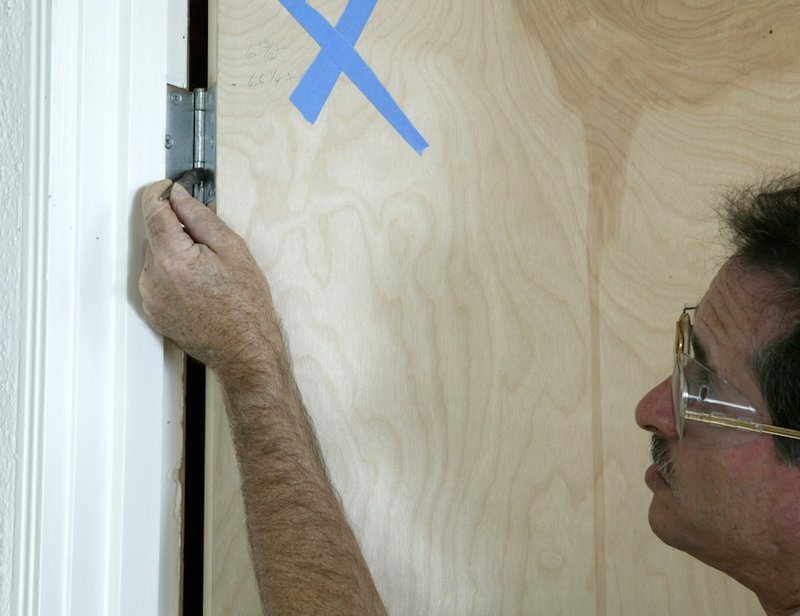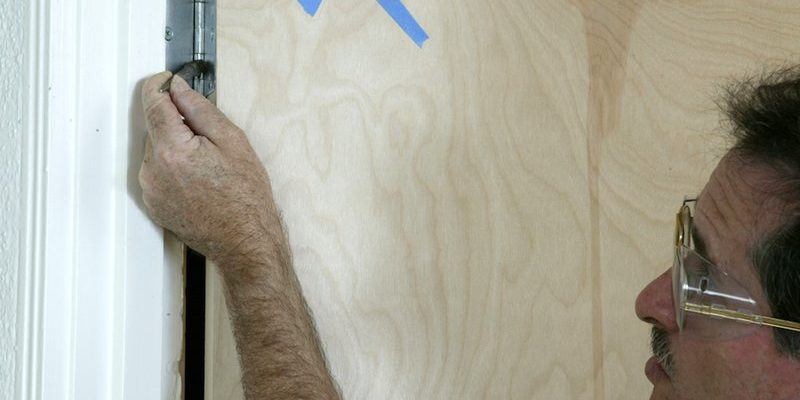
Just like any other mechanical part in your home, door hinges take a beating over time. They might get bent due to constant use, shifting house foundations, or even a little too much force on the door itself. But don’t worry—troubleshooting a bent hinge isn’t nearly as daunting as it sounds. Let’s walk through how to fix this in a way that’s easy to understand, step by step.
Identifying a Bent or Deformed Hinge
Before we jump into fixing issues, it’s essential to identify what a bent or deformed hinge looks like. Generally, a hinge will appear warped or misaligned. You might notice:
- The door itself doesn’t sit straight in the frame.
- There are visible gaps between the door and the frame.
- The hinge leaves don’t line up correctly.
To really see the problem, you’ll want to stand back and look at the door from different angles. If it looks off-kilter, you’re likely dealing with a bent hinge. Sometimes, you might spot signs of wear or rust, which can also indicate it’s time for a fix or replacement.
Common Causes of Hinge Deformation
Understanding why your hinge is bent can help in prevention. Common reasons include:
- Heavy doors that put extra pressure on the hinges, causing them to warp over time.
- Moisture and humidity, which can corrode metal hinges.
- Improper installation, where the hinge wasn’t aligned properly in the first place, leading to stress during use.
Now that you know what to look for, let’s dig into some fixing strategies.
Tools You’ll Need for Repair
Before you can troubleshoot, gather your tools. Here’s a quick list:
- A screwdriver (flathead and Phillips)
- A hammer
- A level to check alignment
- A pair of pliers
- Lubricant (like WD-40)
Having these tools on hand makes the troubleshooting process much smoother. You wouldn’t attempt to bake a cake without measuring cups, right? It’s the same idea here.
Step-by-Step Guide to Fixing the Hinge
Let’s break down the process of fixing your bent hinge. Each step is straightforward, so you’ll feel confident doing it yourself!
1. Remove the Door
Start by unscrewing the hinge pins or the entire hinge from the door. If the door feels heavy, make sure to have someone help hold it while you remove it. Once the door is off, you can work on the hinge without worrying about the door falling.
2. Inspect the Hinge
Take a close look at the hinge. If it’s simply bent, you might be able to bend it back into shape using your hands or pliers. Be gentle—you want to avoid cracking the metal. If the hinge itself is rusted or damaged, consider replacing it with a new one.
3. Align and Reinstall
Once the hinge is back in shape (or replaced), it’s time to reinstall. Make sure the hinge aligns well with the screw holes on both the door and the frame. Use a level to check that everything sits straight. This prevents future bending issues and helps your door operate smoothly.
Lubricating the Hinges
After reinstalling the door, give those hinges a good squirt of lubricant. This helps reduce friction and noise, making sure your door swings open and closed without a hitch. You might be wondering, “How often should I lubricate?” Typically, every few months is a good rule of thumb, especially if you notice it starting to squeak.
Prevention Tips for the Future
To help keep your hinges in prime condition, consider these tips:
- Regularly check for signs of wear or rust.
- Ensure your door isn’t too heavy—if it is, you might need additional support.
- Keep up with lubrication to prevent friction.
You might think of your door hinges like the tires on your car. If you keep them in good shape, they’ll last longer and perform better.
Alternative Solutions
If you find that fixing the hinge isn’t working or you’re just not confident doing it, calling a professional might be the best bet. They can assess the problem more thoroughly and make sure it’s resolved.
Troubleshooting a bent or deformed door hinge doesn’t need to be a hassle. With the right tools, a bit of patience, and a clear understanding of what to do, you can restore your door’s functionality in no time. Just remember to take it slow, follow the steps, and maintain those hinges regularly. Just like a well-oiled machine, your door will swing smoothly, keeping your home safe and sound.
